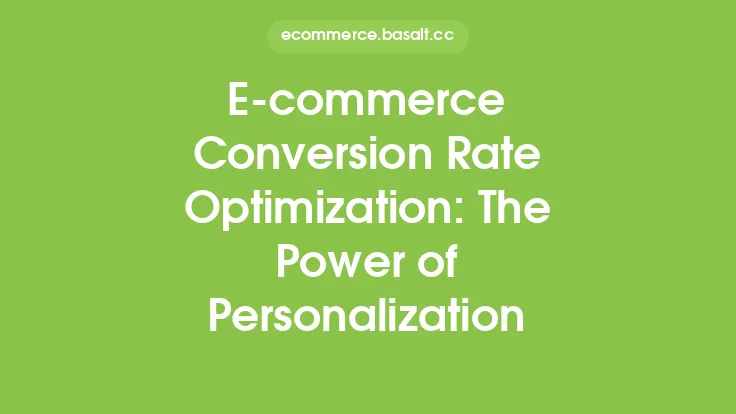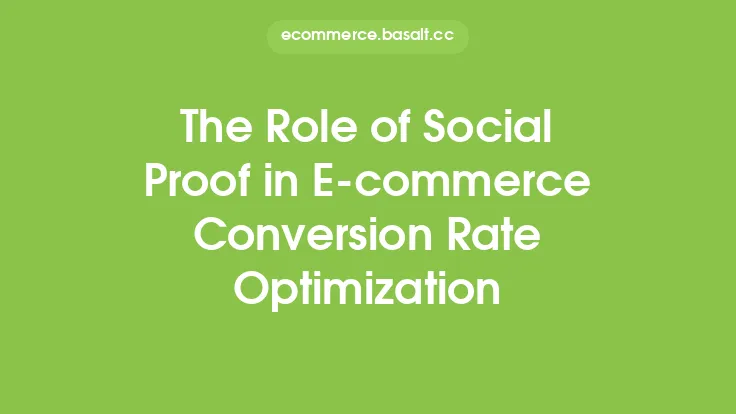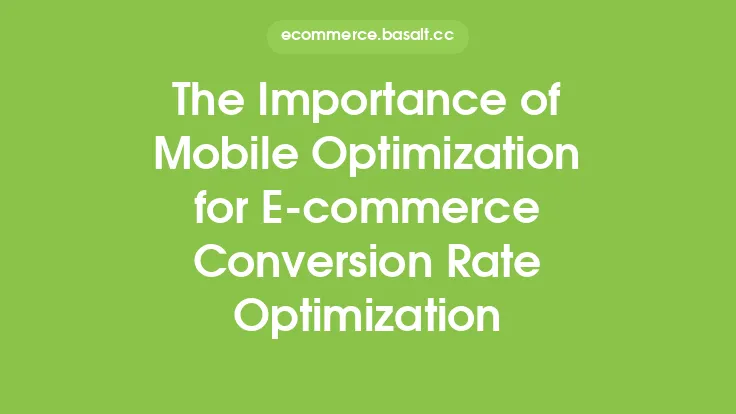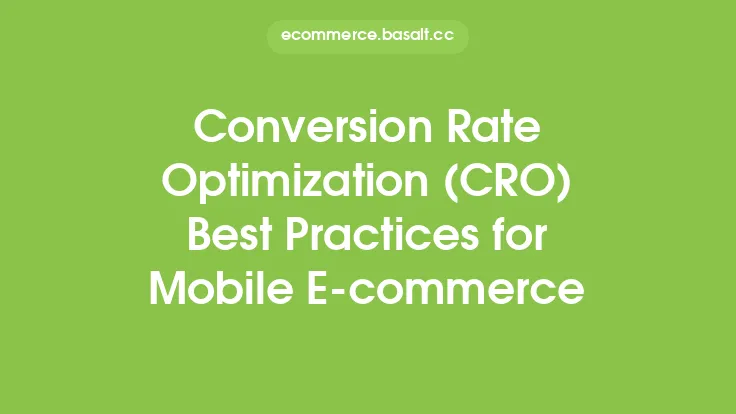In the competitive world of e-commerce, conversion rate optimization (CRO) is a crucial aspect of any online business. It involves understanding how users interact with a website and making data-driven decisions to improve the user experience, ultimately leading to increased conversions and revenue. One powerful strategy for achieving this is personalization, which involves tailoring the user experience to individual preferences, behaviors, and needs. By leveraging personalization, e-commerce businesses can create a more engaging, relevant, and persuasive experience for their customers, driving higher conversion rates and long-term loyalty.
What is Personalization in E-commerce?
Personalization in e-commerce refers to the practice of using data and analytics to create a unique and tailored experience for each individual user. This can involve using customer data, such as browsing history, search queries, and purchase behavior, to deliver targeted recommendations, offers, and content. Personalization can be applied across various touchpoints, including product pages, email marketing, social media, and customer service. The goal of personalization is to create a more human and relatable experience, making customers feel valued, understood, and appreciated.
Benefits of Personalization in E-commerce
The benefits of personalization in e-commerce are numerous and well-documented. Some of the most significant advantages include:
- Increased conversions: Personalization helps to create a more relevant and engaging experience, leading to higher conversion rates and revenue.
- Improved customer satisfaction: By tailoring the experience to individual needs and preferences, personalization can lead to increased customer satisfaction and loyalty.
- Enhanced customer insights: Personalization requires the collection and analysis of customer data, providing valuable insights into customer behavior and preferences.
- Competitive differentiation: Personalization can be a key differentiator for e-commerce businesses, setting them apart from competitors and creating a unique selling proposition.
Types of Personalization in E-commerce
There are several types of personalization that can be applied in e-commerce, including:
- Product recommendations: Using data and analytics to suggest relevant products to customers based on their browsing history, search queries, and purchase behavior.
- Content personalization: Tailoring content, such as product descriptions, images, and videos, to individual customer preferences and interests.
- Email personalization: Using customer data to create targeted and relevant email campaigns, including personalized subject lines, content, and offers.
- Social media personalization: Using social media data to deliver targeted and relevant content, including personalized ads, offers, and recommendations.
Best Practices for Implementing Personalization in E-commerce
To implement personalization effectively in e-commerce, businesses should follow several best practices, including:
- Collecting and analyzing customer data: This involves using tools and technologies, such as analytics software, customer relationship management (CRM) systems, and data management platforms (DMPs), to collect and analyze customer data.
- Using machine learning and AI: Machine learning and AI can be used to analyze customer data and deliver personalized experiences in real-time.
- Testing and optimizing: Personalization strategies should be tested and optimized regularly to ensure they are effective and aligned with customer needs and preferences.
- Ensuring data privacy and security: Businesses must ensure that customer data is collected, stored, and used in a way that is transparent, secure, and compliant with relevant regulations.
Common Personalization Techniques in E-commerce
Several personalization techniques are commonly used in e-commerce, including:
- Segmentation: Dividing customers into distinct groups based on demographics, behavior, or preferences.
- Clustering: Grouping customers with similar characteristics or behaviors together.
- Collaborative filtering: Using customer behavior and preferences to recommend products or content.
- Content recommendation engines: Using algorithms to suggest relevant content, such as product descriptions, images, and videos.
Measuring the Effectiveness of Personalization in E-commerce
To measure the effectiveness of personalization in e-commerce, businesses should track several key metrics, including:
- Conversion rates: The percentage of customers who complete a desired action, such as making a purchase.
- Customer satisfaction: Measured through surveys, feedback forms, and social media sentiment analysis.
- Customer retention: The percentage of customers who return to the website or make repeat purchases.
- Revenue growth: The increase in revenue attributed to personalization efforts.
Challenges and Limitations of Personalization in E-commerce
While personalization can be a powerful strategy for e-commerce businesses, there are several challenges and limitations to consider, including:
- Data quality and accuracy: Personalization requires high-quality and accurate customer data, which can be difficult to collect and maintain.
- Scalability: Personalization can be resource-intensive, requiring significant investments in technology, talent, and infrastructure.
- Customer fatigue: Over-personalization can lead to customer fatigue, where customers feel overwhelmed or annoyed by targeted content and offers.
- Regulatory compliance: Businesses must ensure that personalization efforts comply with relevant regulations, such as the General Data Protection Regulation (GDPR) and the California Consumer Privacy Act (CCPA).
Future of Personalization in E-commerce
The future of personalization in e-commerce is exciting and rapidly evolving. Emerging technologies, such as artificial intelligence (AI), machine learning, and the Internet of Things (IoT), are enabling new and innovative forms of personalization. Some of the trends and innovations to watch include:
- Real-time personalization: Using AI and machine learning to deliver personalized experiences in real-time.
- Omnichannel personalization: Creating seamless and consistent experiences across multiple touchpoints and channels.
- Voice-activated personalization: Using voice assistants and smart speakers to deliver personalized content and recommendations.
- Augmented reality (AR) and virtual reality (VR) personalization: Using immersive technologies to create interactive and engaging experiences.





